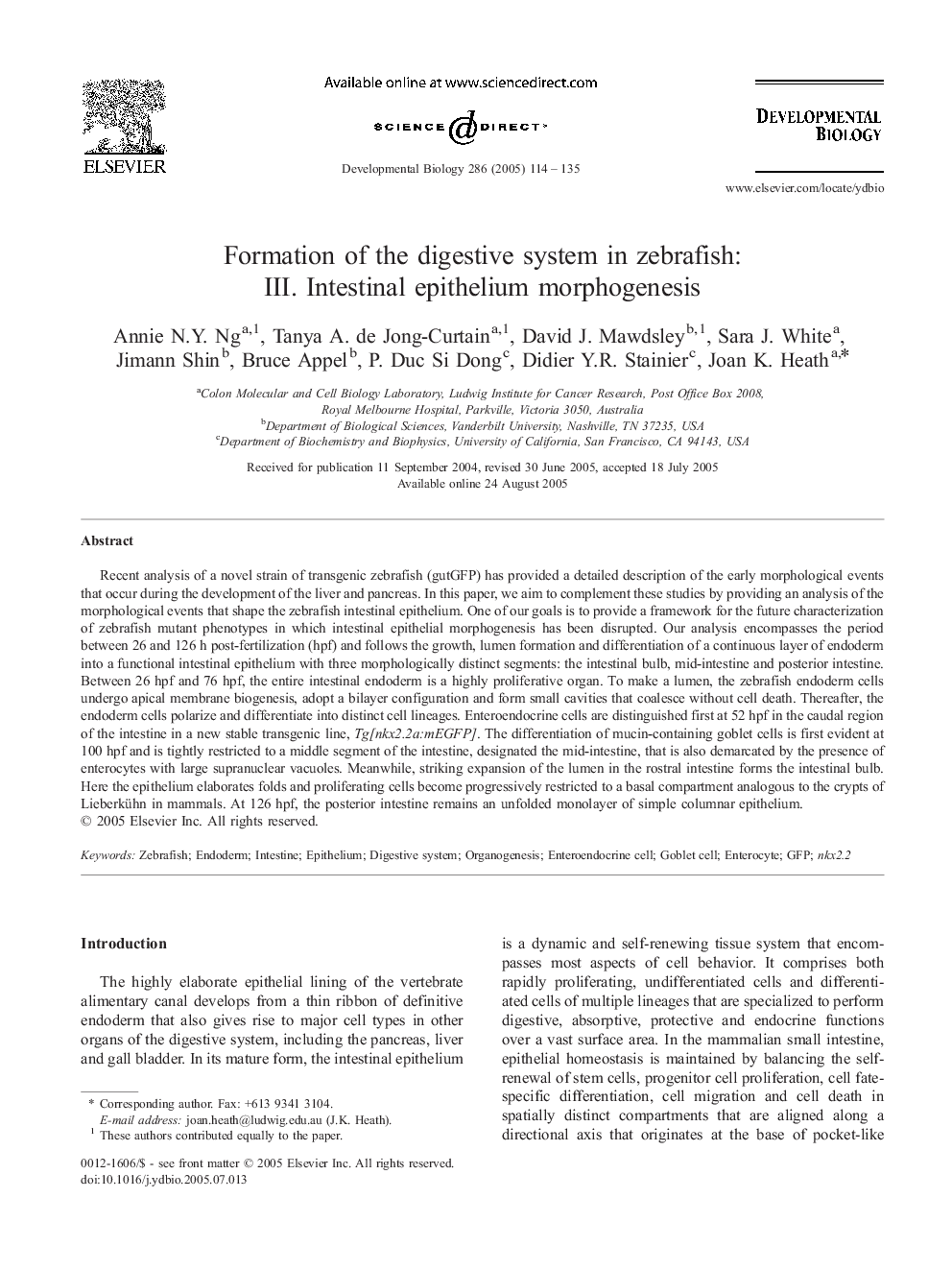| کد مقاله | کد نشریه | سال انتشار | مقاله انگلیسی | نسخه تمام متن |
|---|---|---|---|---|
| 10934145 | 1093882 | 2005 | 22 صفحه PDF | دانلود رایگان |
عنوان انگلیسی مقاله ISI
Formation of the digestive system in zebrafish: III. Intestinal epithelium morphogenesis
دانلود مقاله + سفارش ترجمه
دانلود مقاله ISI انگلیسی
رایگان برای ایرانیان
کلمات کلیدی
موضوعات مرتبط
علوم زیستی و بیوفناوری
بیوشیمی، ژنتیک و زیست شناسی مولکولی
بیولوژی سلول
پیش نمایش صفحه اول مقاله

چکیده انگلیسی
Recent analysis of a novel strain of transgenic zebrafish (gutGFP) has provided a detailed description of the early morphological events that occur during the development of the liver and pancreas. In this paper, we aim to complement these studies by providing an analysis of the morphological events that shape the zebrafish intestinal epithelium. One of our goals is to provide a framework for the future characterization of zebrafish mutant phenotypes in which intestinal epithelial morphogenesis has been disrupted. Our analysis encompasses the period between 26 and 126 h post-fertilization (hpf) and follows the growth, lumen formation and differentiation of a continuous layer of endoderm into a functional intestinal epithelium with three morphologically distinct segments: the intestinal bulb, mid-intestine and posterior intestine. Between 26 hpf and 76 hpf, the entire intestinal endoderm is a highly proliferative organ. To make a lumen, the zebrafish endoderm cells undergo apical membrane biogenesis, adopt a bilayer configuration and form small cavities that coalesce without cell death. Thereafter, the endoderm cells polarize and differentiate into distinct cell lineages. Enteroendocrine cells are distinguished first at 52 hpf in the caudal region of the intestine in a new stable transgenic line, Tg[nkx2.2a:mEGFP]. The differentiation of mucin-containing goblet cells is first evident at 100 hpf and is tightly restricted to a middle segment of the intestine, designated the mid-intestine, that is also demarcated by the presence of enterocytes with large supranuclear vacuoles. Meanwhile, striking expansion of the lumen in the rostral intestine forms the intestinal bulb. Here the epithelium elaborates folds and proliferating cells become progressively restricted to a basal compartment analogous to the crypts of Lieberkühn in mammals. At 126 hpf, the posterior intestine remains an unfolded monolayer of simple columnar epithelium.
ناشر
Database: Elsevier - ScienceDirect (ساینس دایرکت)
Journal: Developmental Biology - Volume 286, Issue 1, 1 October 2005, Pages 114-135
Journal: Developmental Biology - Volume 286, Issue 1, 1 October 2005, Pages 114-135
نویسندگان
Annie N.Y. Ng, Tanya A. de Jong-Curtain, David J. Mawdsley, Sara J. White, Jimann Shin, Bruce Appel, P. Duc Si Dong, Didier Y.R. Stainier, Joan K. Heath,